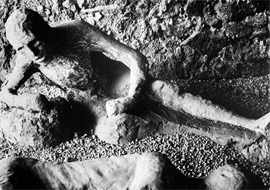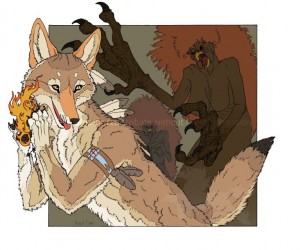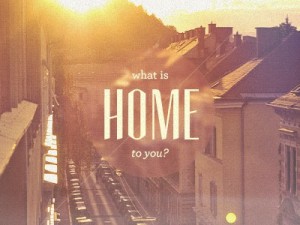2) I’m going to answer this question in a way that (I pray) isn’t too tangential. After reading Linda Hutcheon’s “Introduction”, Northrop Frye’s “Preface” and his “Conclusion to a Literary History of Canada” I have taken away the thematic significance of Canadian identity, particularly the significance of the concepts “unity” and “identity” in the young Canada of Frye’s time. For me, Frye makes Canada out to be a country lacking wholeness and nationalism as a consequence of its largely unexplored, uninhabited terrain. This intimidating setting works along with a cultural incontinuity displayed through a battle for language dominance with the French and the English.
I remember watching the opening ceremonies of the 2010 Vancouver Olympics and feeling annoyed at how Canadian culture was presented to the world. Literally every present-day stereotypical aspect of Canadian culture was included in the internationally-viewed performance including (but not limited to) beavers, moose, lumberjacks, maple syrup, a hell of a lot of ice, the mounties, and oversized winter coats.
The opening ceremonies depicted a country that is made up of harsh, cold weather, and landscapes of vast emptiness. While not every aspect of the ceremony was awful (some of the ceremony was very touching), it still missed so much of what it means to be a Canadian (at least what it means today). This ceremony looks toward stereotypes for some sort of inherent Canadian-ness. For me, it looks pretty stricken of (and desperate for) some sort of true Canadian identity. This ceremony depicts for me what Northrop Frye seems to be directing us toward: his understanding of a past Canada’s search for identity.
Canadian identity seems to have its roots in more modern cultural depictions. This video above touches on the humorous aspect of Canadian identity. In this video Jeremy Hotz (1997) compares us to the US stating “we’re very similar to the United States. We both have armies… we just didn’t give ours guns or anything.. Here comes the Canadian army with plastic knives and forks” (Hotz, 1997). While this statement is certainly funny, it isn’t necessarily wrong. Hotz is touching on a lack of individuality that exists for Canada as almost the “naïve little brother” of the US: loyal enough to be included, but too underdeveloped to be given any real sovereignty.
After reading the assigned parts of Northrop Frye’s “The Bush Garden”, I feel like Frye is pinpointing the similar colonial issues of identity and unity that burdened young Canada. Frye describes Canada as “full of wilderness”(222) and “to enter Canada [as] a matter of being silently swallowed by an alien continent” (219).
Frye defines identity as “local and regional, rooted in the imagination and in works of culture” and unity as “national in reference, international in perspective, and rooted in political feeling” (xxii). Frye states “The tension between this political sense of unity and the imaginative sense of locality is the essence of whatever the word ‘Canadian’ means” (xxiii) therefore identifying (what he deems as) the inherent issue with Canadian-ness. Frye later identifies the heterogeneous language tension that governs Canada. Frye touches on the issues of the French versus the English in crises like the FLQ and states “Assimilating unity to identity produces the kind of provincial isolation which is now called separatism” (xxiii).
Because Frye focuses so distinctly on (what he considers to be) the issues of identity and unity in this “wilderness”, I believe that this heavily influences his observations regarding Scott’s work. Indigenous peoples, being peoples of the vast, unexplored, frightening Canadian lands are those who already identify themselves with Canadian territory. In addition, as a culture consisting primarily of orality, I feel Frye ignores Aboriginal cultures and Scott’s attempt at their historical destruction because Frye is more focused on the literary aspect of Canadian culture. Seeing as this literary aspect is more heavily demonstrated through immigrant colonials, the tensions between Scott and Aboriginal culture are tangential to Frye’s focus.
——-
Works Cited
Frye, Northrop. The Bush Garden; Essays on the Canadian Imagination. Toronto: Anansi, 1995. Print.
“Just for Laughs – What Does It Mean to Be Canadian?” YouTube. YouTube, n.d. Web. 24 June 2015.
“Opening Ceremony – Highlights – Vancouver 2010 Winter Olympic Games.” YouTube. YouTube, n.d. Web. 24 June 2015.





